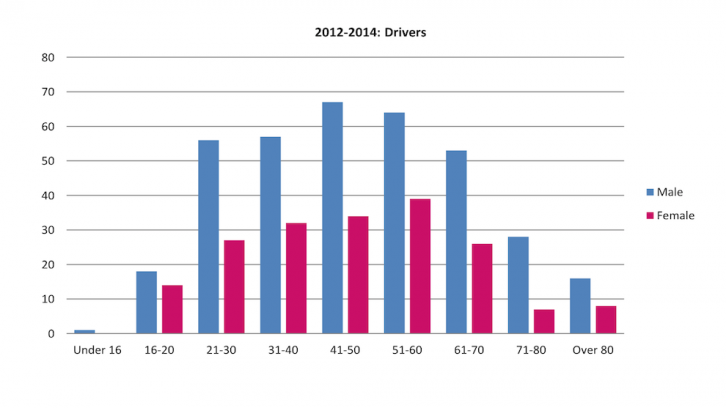Collision Report
Pedestrian victims likely to be women; drivers likely men: police
Data on vehicle/pedestrian collisions in Halifax shows gender divide

caption

caption
Two women cross Oxford Street and Coburg Road.Male drivers in Halifax are involved in vehicle/pedestrian collisions at a higher rate than females, who make up the majority of victims.
According to a Halifax Regional Police report issued last week, 121 collisions that involved vehicles, pedestrians and cyclists took place in the Halifax Regional Municipality between January and July. Out of these incidents, 93 were strictly vehicle/pedestrian collisions.
In 2014, the Halifax Regional Municipality created the Heads Up Halifax campaign to raise awareness, through ads and billboards, about the dangers and responsibilities of sharing the road among drivers, cyclists, and pedestrians.
The number of vehicle/pedestrian collisions between January and July decreased in comparison with the previous year. However, male drivers still made up the majority of those who were accounted for the collisions.
“We recognize the importance of public education addressing the issues that are there around crosswalk safety and we were trying to push that through in recent years and if that has an impact, then that is great,” said Tiffany Chase, a spokeswoman for the municipality.
The Heads Up Halifax campaign will resume this fall, starting in the middle of October and continuing into November, in support of the municipality’s Nov. 4 Crosswalk Awareness Day.
“The data does lean towards the drivers being male, but we want to make sure everyone is paying attention to our message,” said Tiffany Chase.
Halifax Regional Police did not comment on the statistics from 2012 to 2015, but Cst. Stacy Opalka, a spokeswoman for Halifax Regional Police, said that key information about the driver and victim are needed for statistics and to fill accident forms.
Psychological Research
Various studies have been made to explore the relationship between gender and driving.
A study by academics Türker Özkan and Timo Lajunen notes that research “about the relationship between sex, exposure, risky driving, and accident involvement have been mixed,” making it hard to separate one factor from another.
However, the study found that male drivers cause collisions because they are more likely to overestimate their ability to respond quickly to driving situations.
An analysis, prepared by The Social Issues Research Centre, exploring the gender divide in driving behaviour, states that the high levels of testosterone, which get associated with risk-taking makes men more likely to be engaged in aggressive driving.
The analysis also recommends that if the relationship between gender and driving violations were removed, gender would no longer be a noted factor.
“Our campaigns focus on specifics, such as distracted driving and the importance of seat belt safety, without targeting any specific demographic,” said Cst. Stacy Opalka, a spokeswoman for Halifax Regional Police.



